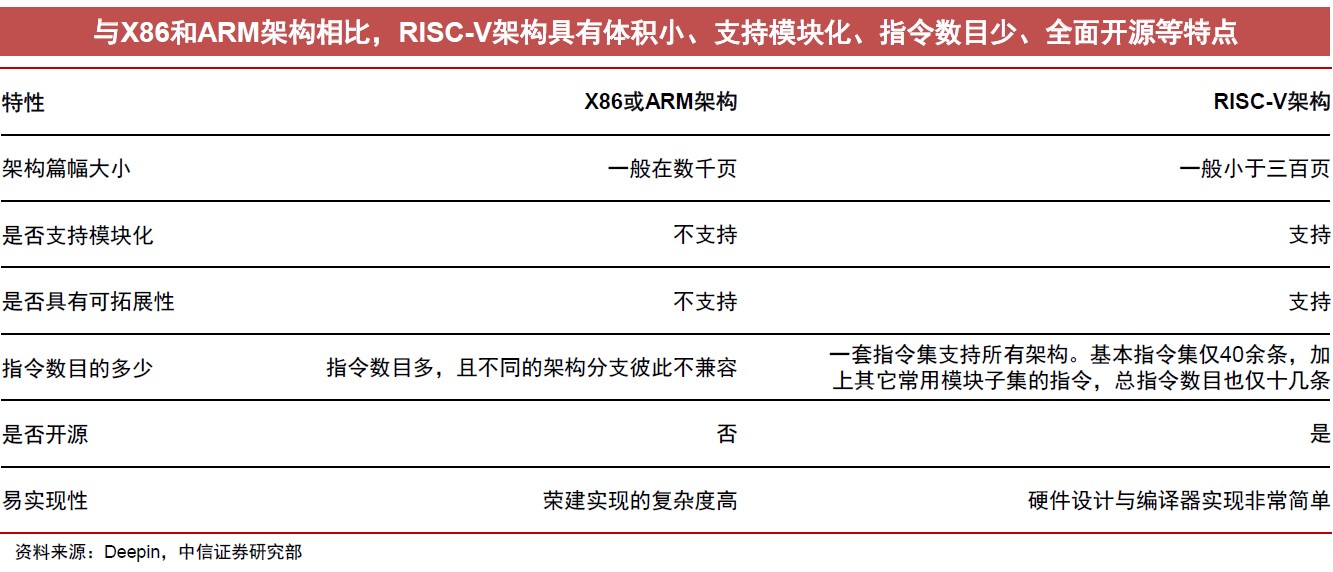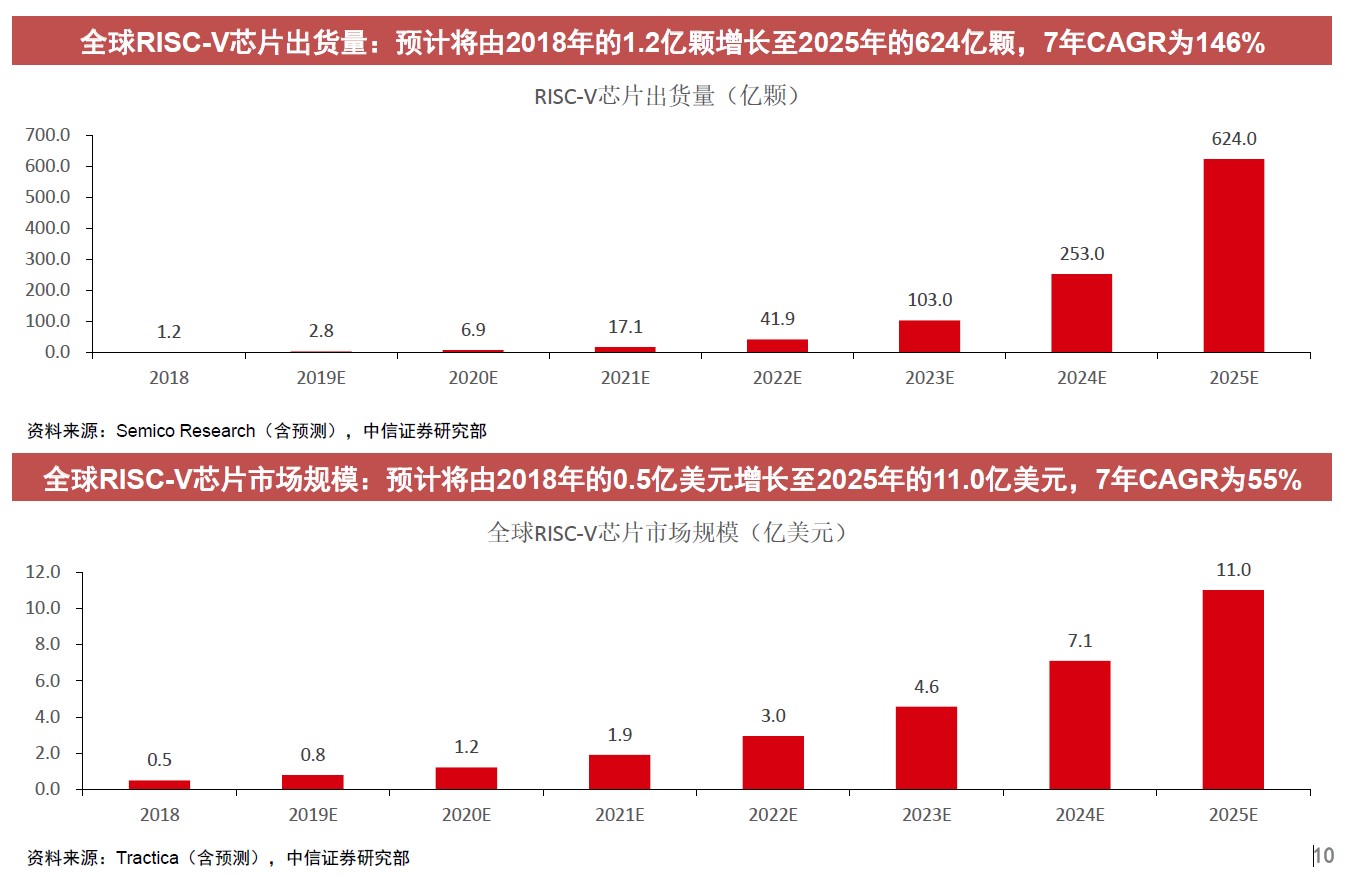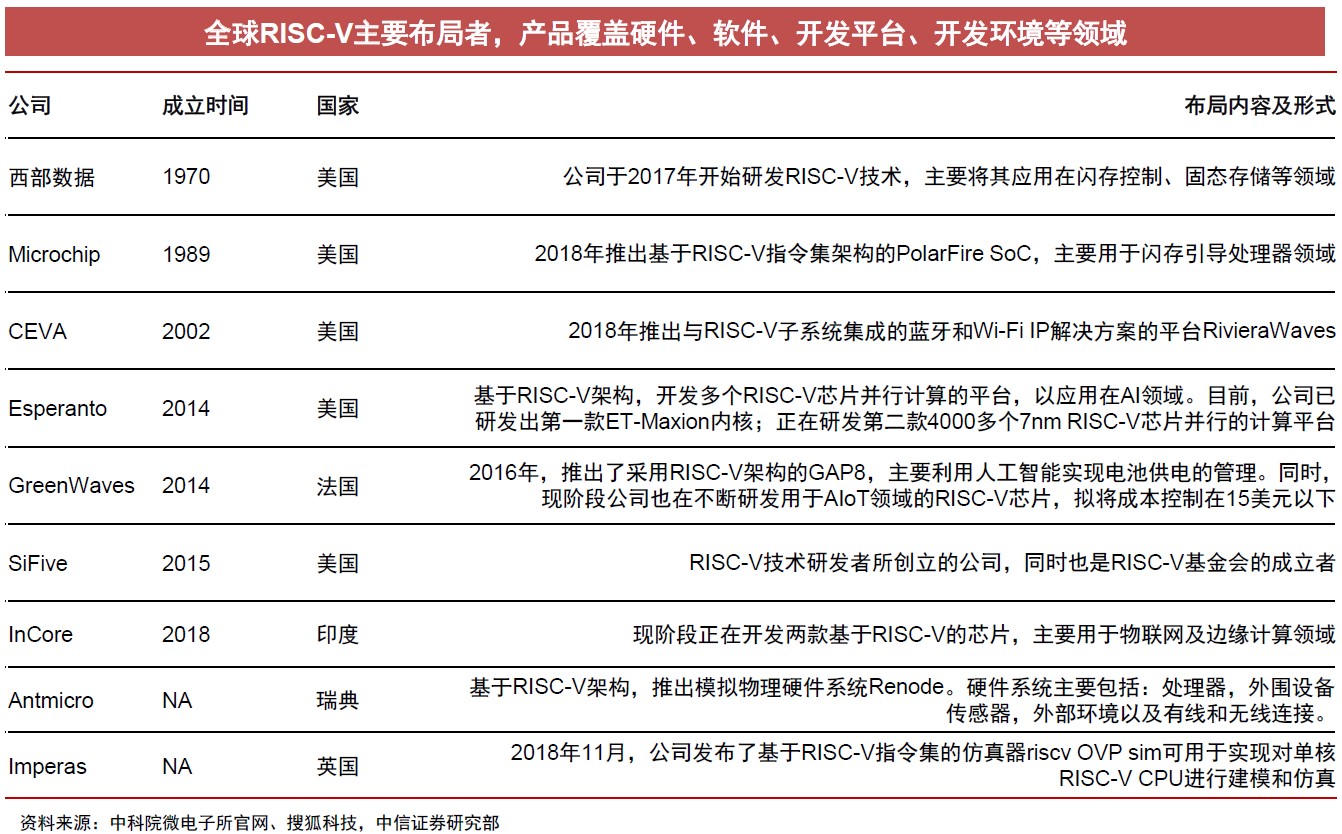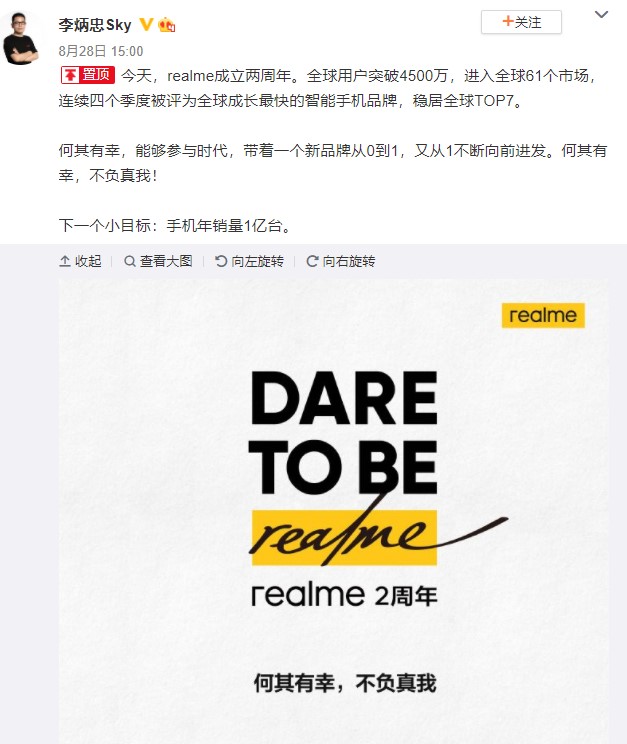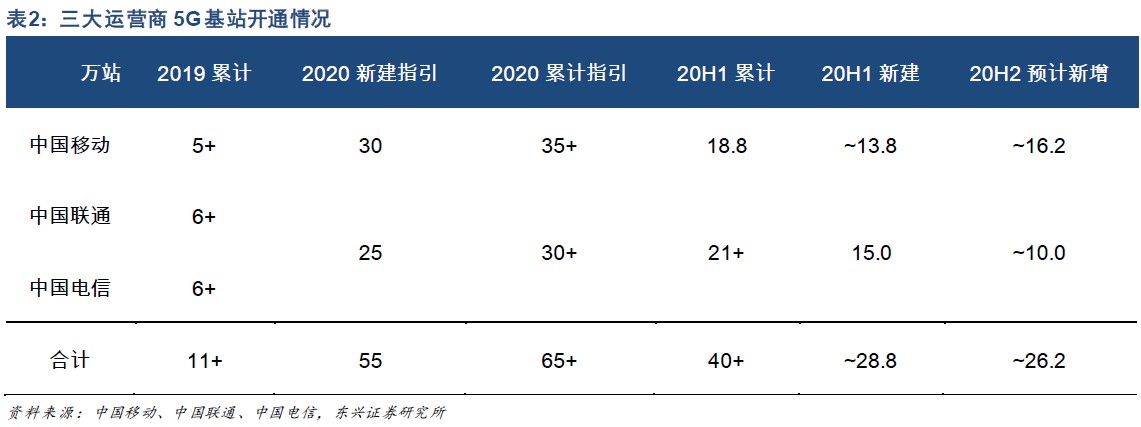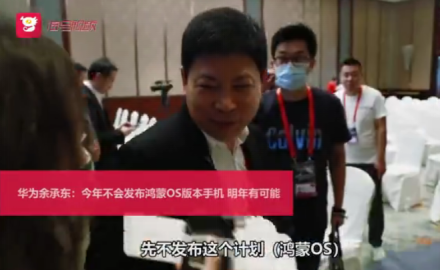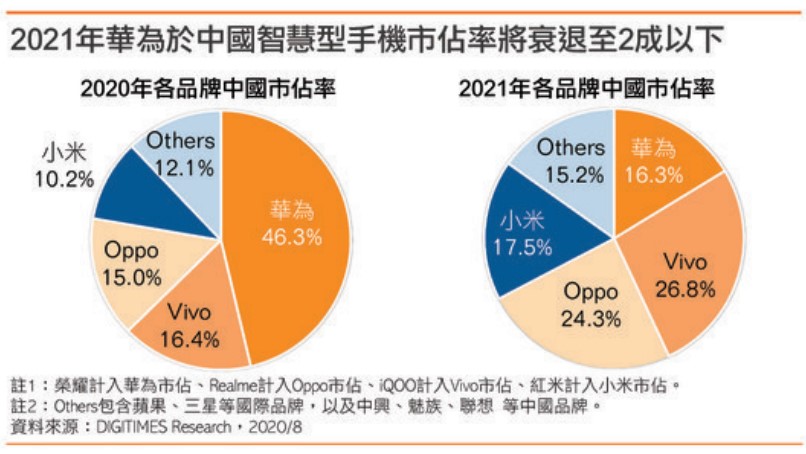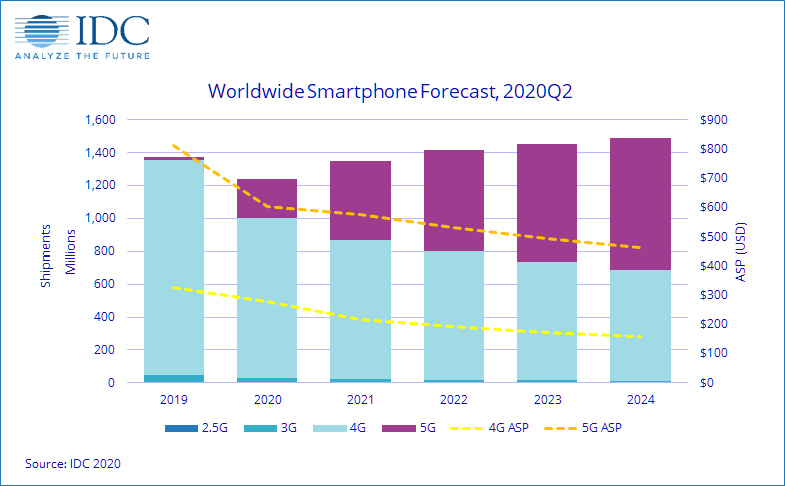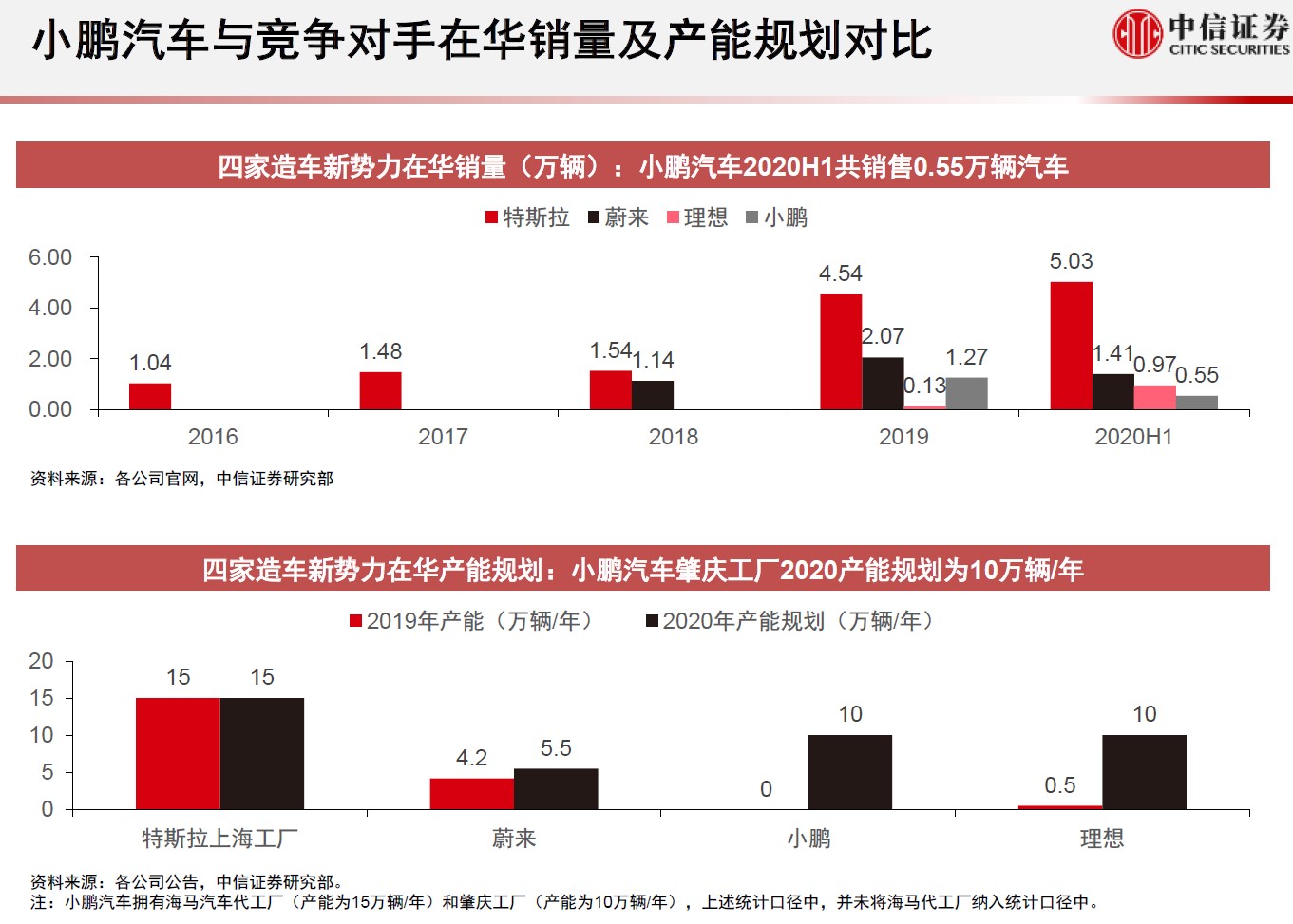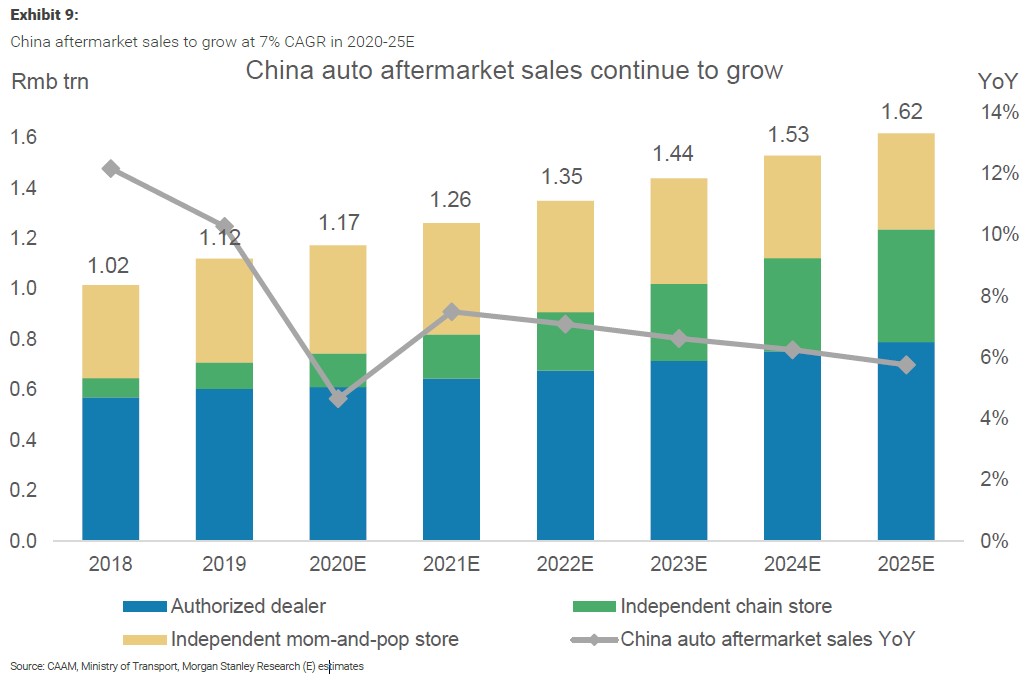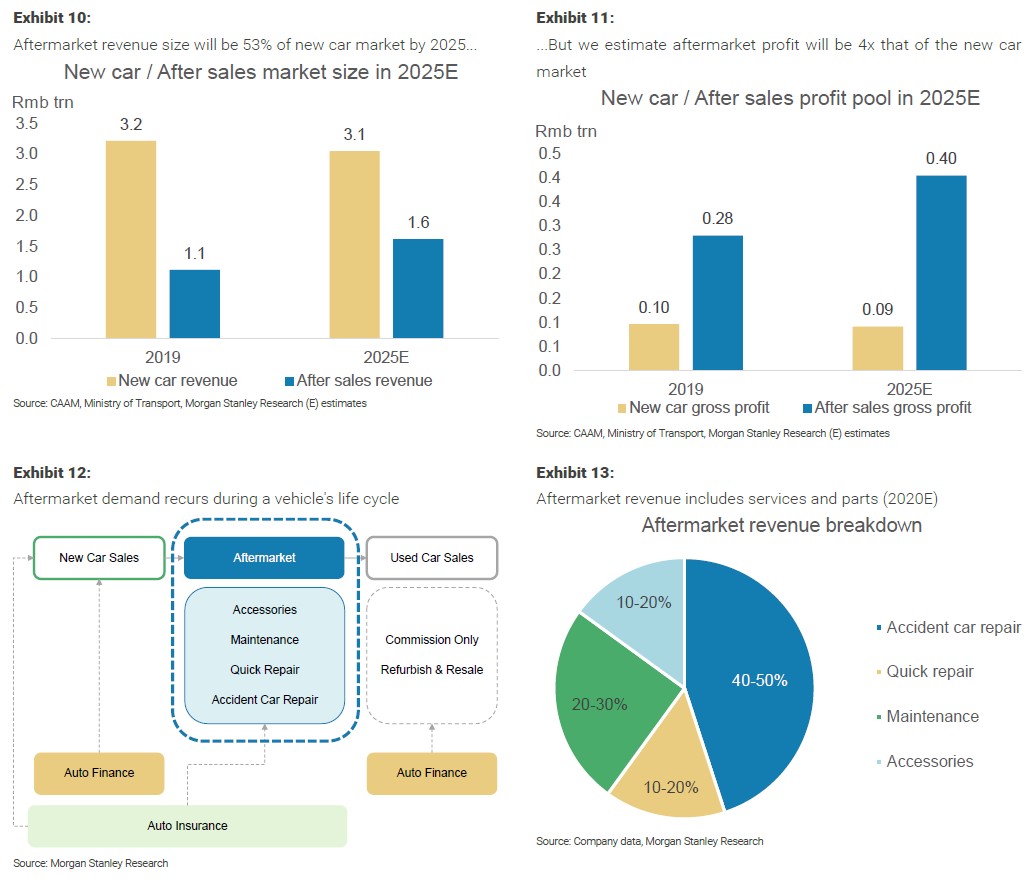
8-31 #HariMerdeka: Samsung has commenced mass production of the industry’s first 16-gigabit (Gb) LPDDR5 mobile DRAM; realme wants to sell more than 100M units of smartphones annually; etc.
RISC-V organizes different parts together in a modular manner, and tries to meet various application scenarios through a unified architecture. This modularity is not available in x86 and ARM architectures. Benefiting from the short and compact architecture and modular features, the number of instructions in the RISC-V architecture is very concise. There are only more than 40 basic RISC-V instructions, and there are only dozens of instructions in total with other modular extension instructions. (CITIC Securities report)
According to the analysis by CITIC Securities, global RISC-V chip shipments are expected to increase from 120M in 2018 to 62.4B in 2025, with a CAGR of 146% in 7 years. At the same time, the scale of the global RISC-V chip market is expected to grow from USD50M in 2018 to USD1.1B in 2025, with a CAGR of 55% in 7 years. (CITIC Securities report)
The global RISC-V main layout, products covering hardware, software, development platform, development environment and other fields. (CITIC Securities report)
Apple will reportedly debut a powerful custom-designed graphics processing unit (GPU) in its first ARM-based iMac which is set to launch in 2H21. Codenamed “Lifuka”, the self-developed GPU to feature in the Apple Silicon powered iMac will be produced using TSMC’s 5nm manufacturing process. (CN Beta, China Times, Tom’s Hardware, Mac Rumors)
In 2012, French and Google researchers analyzed a large data set composed of 382,269 users’ browsing history to investigate whether the browsing history can be used as fingerprints to track users. Mozilla has collected browsing data from ~52,000 Firefox for 7 calendar days, then paused for 7 days, and then resumed for an additional 7 days. After analyzing the collected data, they identified 48,919 distinct browsing profiles, of which 99% are unique. (CN Beta, HAL, Usenix, Help Netsecurity)
Goodix Technology has released the 1H20 report. Data show that the company achieved operating income of CNY3.056B, a yoY increase of 5.87%; net profit attributable to shareholders of listed companies was CNY597M, a YoY decrease of 41.26%. In 1H20, the company’s latest ultra-thin screen optical fingerprint shipments exceeded 10M pieces. (My Drivers, Sina, IT Home, NBD)
Samsung has commenced mass production of the industry’s first 16-gigabit (Gb) LPDDR5 mobile DRAM, using extreme ultraviolet (EUV) technology. Built on Samsung’s third-generation 10nm-class (1z) process, the new 16Gb LPDDR5 boasts the highest mobile memory performance and largest capacity. (CN Beta, Samsung, IT Home)
In Aug 2020, China Mobile raised its 5G capital expenditure guidance. The latest guidance is CNY105B, a slight increase of 2.8% from the CNY100B at the beginning of the year. The other two operators’ 5G capital expenditures remain unchanged. Among them, China Unicom’s annual 5G capital expenditure is still CNY35B, and China Telecom is still CNY45.3B. Judging from the completion of the first half of the year, nearly half of the 5G capital expenditure plans of the three major operators have not been completed. (Dongxing Securities report)
At the end of 2019, the three major operators in China have opened more than 110,000 5G base stations in total. China Mobile has opened more than 50,000 5G base stations, and China Telecom and China Unicom have opened more than 60,000 in total. As of 1H20, China Mobile has opened more than 350,000 5G base stations, and China Telecom and Unicom have opened more than 210,000 5G base stations through co-construction and sharing. China Mobile raised its annual plan for new 5G base stations to 300,000 stations (the original guideline was 250,000 stations). Dongxing Securities believes that as the product side matures, SA is expected to be commercialized in 4Q20, and domestic 5G construction will further accelerate. (Dongxing Securities report)
In a short period of time, OPPO’s realme has become the fastest-growing smartphone brand globally with its presence solidified in 61 countries and regions. Li Bingzhong (Sky Li), the brand’s founder and CEO has revealed that in the next 2 years, realme will be much more than just a smartphone maker. The company will focus more on AIoT and will expand its presence in more markets. He states that realme wants to sell more than 100M units of smartphones annually. (GizChina, Gizmo China, Sohu)
Huawei’s Consumer Business CEO, Yu Chengdong, is asked the timing of the use of HarmonyOS on mobile phones. He has revealed that this will not happen in 2020, yet 2021 is a possibility. (Laoyaoba, GizChina, IT Home)
Amidst the stricter regulations being placed upon Huawei, the company has had to slow down its pace of orders from its handset ODMs. After the company lost TSMC as its primary chip supplier, the US government has also amended its regulations to further hamper its supply chain. Being a major player in the smartphone market, this means that the company stands to lose a lot of grounds in the market share. (Gizmo China, Digitimes, Digitimes)
The worldwide smartphone market is forecast to decline 9.5% YoY in 2020 with shipments totaling 1.2B units, according to IDC. While 2Q20 resulted in slightly better than expected numbers, the market was still down 17% YoY with visible signs of economic concerns. On a positive note, IDC expects the smartphone market will return to a full recovery by 2022, and will achieve a compound annual growth rate (CAGR) of 1.7% over the 5 year forecast, largely driven by the assumption that smartphones will continue to be the computing platform of choice for most of the world. (Gizmo China, IDC, RCR Wireless)
ASUS is reportedly working on 4 smartphones, codenamed “Lito”, “Lagoon”, “Bengal”, and “Scuba”. The chipsets of these smartphones are mainly for mid-range to low-end segment. (Twitter, GSM Arena, Android Headlines)
Samsung Galaxy M31 is announced in Germany – 6.67” 1080×2340 FHD+ Super AMOLED HiD, Qualcomm Snapdragon 730, rear quad 64MP-12MP ultrawide-5MP macro-5MP depth + front 32MP, 6+128GB, Android 10.0, side fingerprint scanner, 7000mAh 25W, EUR360. (CN Beta, GSM Arena, Samsung)
Chinese electric vehicle startup Xpeng has raised USD1.5B through an initial public offering in the U.S. as investor interest in EVs and clean energy outstripped concerns over escalating tensions between the U.S. and China. (TechCrunch, Reuters, CITIC Securities report, WSJ)
Morgan Stanley believes China’s automotive aftermarket sales will grow at a 7% CAGR in the next 5 years (2020-2025), outpacing flattish new car sales, and become a profit driver for auto dealers and repair stores by 2025. In China, the auto aftermarket or after-sales services are provided by authorized 4S dealers (4S stands for Sales, Service, Spare Parts and Surveys) and independent channels, and the latter include both chain stores and mom-and-pop stores. Morgan Stanley forecast China’s auto aftermarket revenue size to reach CNY1.6T by 2025. (Morgan Stanley report)
Morgan Stanley forecasts China’s auto aftermarket revenue size to reach CNY1.6T by 2025. Although this is only 53% of new car revenue size, thanks to higher margins in the after-sales business, they estimate the profit pool from the aftermarket to be 4x that of the new car distribution market, up from 3x only in 2019. (Morgan Stanley report)

